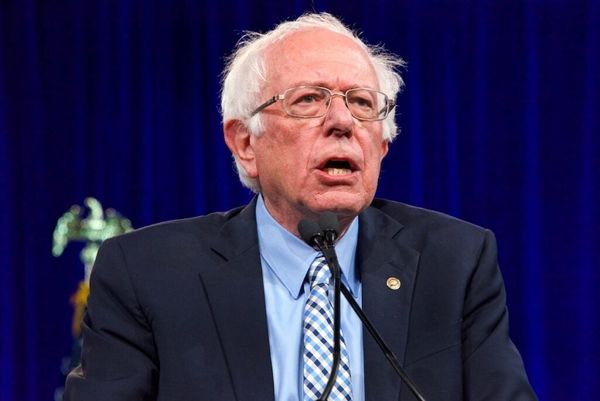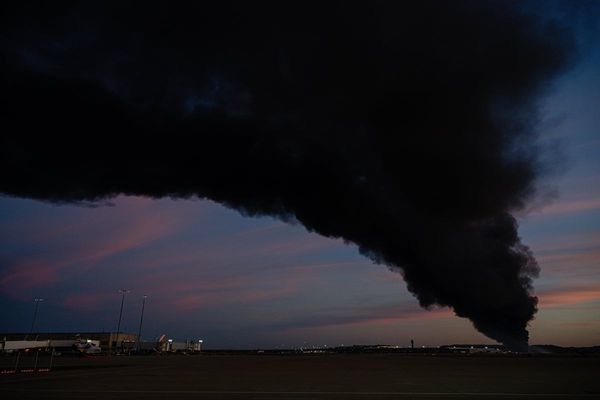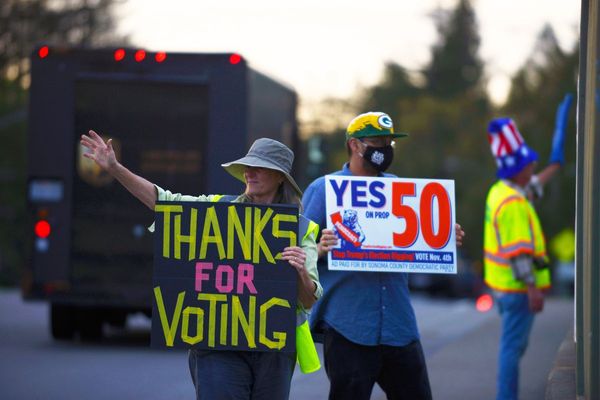
Rashmi Deshpande, a 60-year-old HR professional living in Mumbai’s Andheri East, began experiencing severe irritation in her nose, eyes, and throat just days before Diwali this year. Despite multiple visits to her doctor and several courses of antibiotics and anti-allergens, her condition did not improve. Ultimately, her doctor diagnosed the root cause as pollution, pointing out dust accumulated in her lungs in an X-ray.
Deshpande’s doctor had advised her to stay indoors, keep windows closed, avoid public transport, and reduce her outdoor activities. As a result, she missed work, skipped her morning walks, and canceled leisure activities, including her 60th birthday celebration.
The road outside her building had been dug up twice in recent months, exacerbating the air quality – the AQI on Thursday last week was pegged at 202, in comparison to Delhi’s 450. While Mumbai has a geographical advantage of being on the coast, increased construction projects and climate change have caused alarming levels of air pollution the last three years. Last year, it even surpassed Delhi’s levels for a few days. Currently, Mumbai ranks as the 169th most polluted city in the world, with the major pollutants being PM2.5 and PM10. And health professionals report a surge in pollution-related ailments, with doctors and experts warning that the city could be soon facing a crisis like Delhi.
“I often wondered if this will ever go away,” said Deshpande, who ended up visiting the doctor five times in that one month. “Pollution has increased so much in recent years that I fear it will only get worse. Despite the impact, many educated residents in our gated community refuse to sacrifice crackers during Diwali. How will we live like this?”
Deshpande’s ordeal reflects a growing concern among Mumbaikars, with the city recording a 38 percent rise in PM2.5 levels in the last five years. As of last week, the average AQI in Mumbai was 191, considered highly unsatisfactory. In Borivali East, the AQI was between 301 and 400, which is considered very poor, and in seven localities (Deonar, Kandivli West, Malad West, Mazgaon, Swery, Navy Nagar in Colaba, and Siddharth Nagar in Worli) the AQI was between 201 and 300, which is considered poor.
Is the city losing its natural advantage?
Mumbai’s coastal location has traditionally served as a natural defence against pollution, with land breezes dispersing pollutants into the sea. However, this “natural cleansing mechanism” has its limitations, and recent years have seen pollution levels climb alarmingly.
In the immediate aftermath of Covid-19, the BMC incentivised the industry by announcing a 50 percent discount on premium payments, in order to ‘revive the state’s economy’. This led to a massive increase in developers registering new projects. Experts cite this as one of the major reasons behind the city’s construction boom.
Gufran Beig, founder and project director of SAFAR, India’s air quality forecasting system, explained how a phenomenon called La Niña had contributed to the pollution. This leads to the cooling of the water body, which slows down the larger surface wind speed and peninsular wind speeds in Mumbai. And when that happens, the natural advantage Mumbai has due to the geography gets lost.
While last year did not experience this phenomena, there were a lot of construction projects in the city with the coastal corridor and new metro lines being made, which led to a huge amount of dust particles. Beig’s study from 2020 showed that transport emissions are the main source of PM2.5 in the city, but the largest contributor to PM10 was windblown resuspended dust.
“This year, La Niña is likely to strike next month. There is a possibility that if effective measures for the construction are not taken, air quality will further deteriorate in December and January,” he told Newslaundry. “While the major metro work etc. is complete, the climate change factor is uncertain. We never thought that it could get so bad in 2022 because of La Niña. With climate change, such shocks are likely to be frequent. May see some more surprises that won’t be in our favour.”
Beig said that it was important to attack the source with some science-backed planning instead of cosmetic measures like dust towers.
“Rules are there to tackle air pollution but the problem in this city is that the implementation is terrible,” he said. “There needs to be more transparency in terms of data and surrounding environment on a regular basis. Unless you have the full diagnosis, the cure will be incomplete.”
Mumbai is also currently experiencing fluctuating temperatures, with warm days and cool nights, which triggers thermal inversion, where cooler air traps pollutants close to the ground, leading to smog conditions.
Construction boom
In the immediate aftermath of Covid-19, the BMC incentivised the industry by announcing a 50 percent discount on premium payments, in order to ‘revive the state’s economy’. This led to a massive increase in developers registering new projects. Experts cite this as one of the major reasons behind the city’s construction boom.
“This led to an unprecedented level of redevelopment projects being undertaken,” said Dr Lancelot Pinto, consultant respirologist, PD Hinduja National Hospital and Medical Research Centre. “Once you cross a certain threshold of AQI, is there a difference between 200 and 300? Irritation to your lung can happen even at 150.”
He said that he has been advising patients to get out of the city if they had the privilege to, at this time.
“We’ve clearly seen a rise in hospitalisation of people with pre-existing respiratory diseases in the last one month,” he said. “We have also observed that people’s recovery from a viral infection is taking a lot longer these days. My hypothesis is that the lungs need to heal after they have been irritated by a virus. But for that you need to breathe clean air. It’s a cycle that doesn't subside. Even if you put an air purifier, it’s just one room. How much can you run away from the problem? You cannot fix something like this that needs to be fixed at a macro level.”
Health concerns on the rise
Dipak Sonone, a 29-year-old doctor residing in Haji Ali told Newslaundry that after he fell sick due to the pollution during Diwali, he has been considering leaving the city.
“Things have gotten worse in the last few two years. After this Diwali when I saw the sky, I felt very pessimistic about the future in this city as no one seems to care about the environment – neither the government nor bureaucracy, no one even takes notice of these problems, forget about coming up with any solution to tackle it or improve the quality of air.”
“When I fell sick, I initially thought it was a bacterial infection so I had medicines but they didn’t help. I was going out daily and inhaling polluted air. Then I started wearing a mask everyday and instantly my condition improved,” he said. “As a doctor I’m aware of the ill effects of air pollution on our lungs and other organs. At present, in my area, we have air polluted with PM10 which is mainly because of construction, agriculture and desert dust. We do have construction work going on around us. During Diwali it was PM2.5 which contains bacteria and dust particles which can enter into our blood stream and other organs, thus causing different medical conditions.”
Mumbai’s coastal location has traditionally served as a natural defence against pollution, with land breezes dispersing pollutants into the sea. However, this “natural cleansing mechanism” has its limitations, and recent years have seen pollution levels climb alarmingly.
One of the worst affected areas in the city is Govandi, which has one of Asia’s largest dumping grounds, the city’s only bio-medical waste treatment plant, as well as ready mixed concrete plants. According to residents in the locality, the already bad health conditions have gotten worse in the last few years.
There are several pending PILs filed by residents – the most recent being a PIL seeking closure of the RMCs in the area due to the alarming rise in air pollution in the locality. Last week, BMC sent closure directions and show cause notices to two of the RMCs, citing non-compliance.
Faiyaz Alam Shaikh, a resident of the locality and president of the Govandi Citizens Welfare Forum, had filed an RTI earlier this year which found that nine out of every 100 deaths from asthma in the city are from Govandi.
“People in this locality are anyway vulnerable to respiratory diseases and it seems to have gotten worse in the last couple of years,” he said. “People here may not know what pollution is or how it is affecting them in theory, but they are surely facing its consequences. I can see the dust particulates in the air especially in winter.
Elliott, a 23-year-old psychologist in Dahisar, said that it had become routine for them to have cough syrup.
“I’ve been coughing more, there’s a constant irritation in my throat and my eyes get watery when I step out,” she said. “You can see the smog around the streets in the evening. It’s worrisome to think what will happen in the future as we’ll all be at greater risk of respiratory diseases."
Dr Priti Meshram, who leads pulmonary medicine at Mumbai’s JJ Hospital, said that there was a marked increase in the number of patients coming in due to the pollution the last two years, and the OPD usually remained full these months.
“There’s a definite increase in pollution levels, you can hardly see the blue sky these days. Air pollution directly affects the lungs as we breathe it in directly. We generally have patients who already have preexisting lung diseases as it affected them more severely," she said, saying that she advised her patients to wear masks, get air purifiers at home, and have their ACs serviced.
“While Delhi and Mumbai’s vehicular pollutants are common, Delhi has farming related pollution and Mumbai has rapid construction. So if we don’t keep our construction activities in check we may get closer to being as bad as Delhi.
Kevin Harding, a 30-year-old travel consultant, said that on falling sick the day after Diwali, his doctor initially recommended antibiotics for cough and cold but that did not work.
“There were no signs of improvement for three to five days. I went back to the doctor to check as I was due to travel abroad and wanted to be better by then. By this time there was a green phlegm in my cough and he was able to identify pollution as the main cause. He gave me an injection which helped my immunity and on reaching another country, I got so much better. When I returned to Mumbai I once again felt my breathing pattern change.”
After the elections, Mumbai’s civic body has taken measures to control pollution. It issued warnings to more than 5,000 structures across the city to check compliance with its guidelines on pollution.
Air purifiers have also been installed at some of the city’s key junctures, such as BKC, Jogeshwari Link Road, and Dahisar Check Naka. There are also rules for construction sites, such as installing a sprinkler system to spray water around four times a day, erecting a cloth or iron cover of at least 35 feet around construction sites larger than one acre, and mandating CCTV installation at every construction site.
But Mumbai has around 25 continuous ambient air quality monitoring stations, which is less than half of the 67 stations required as per the National Clean Air Programme.
Ravi Andhale, Maharashtra Pollution Control Board’s regional officer in Mumbai, acknowledged that the construction boom had been a big factor but it was not a disadvantage and just a “phase”.
“There will be some discomfort as any such change affects people. But it’s just a phase and is for the development of the city such as adding metro lines,” he told Newslaundry. “But there are several other factors as well such as the metrological factors. Mumbai will never be like Delhi as the capital is landlocked and has factors like stubble burning, which Mumbai does not.”
He added that much of the dust in the city was carried from the east. “In winters, the winds move from the east to the west. The east includes localities such as Navi Mumbai, which has several industries.”
This story is part of a collaborative campaign to tackle air pollution. Here’s how you can join the Fight To Breathe. Click here to power this campaign.
Newslaundry is a reader-supported, ad-free, independent news outlet based out of New Delhi. Support their journalism, here.







